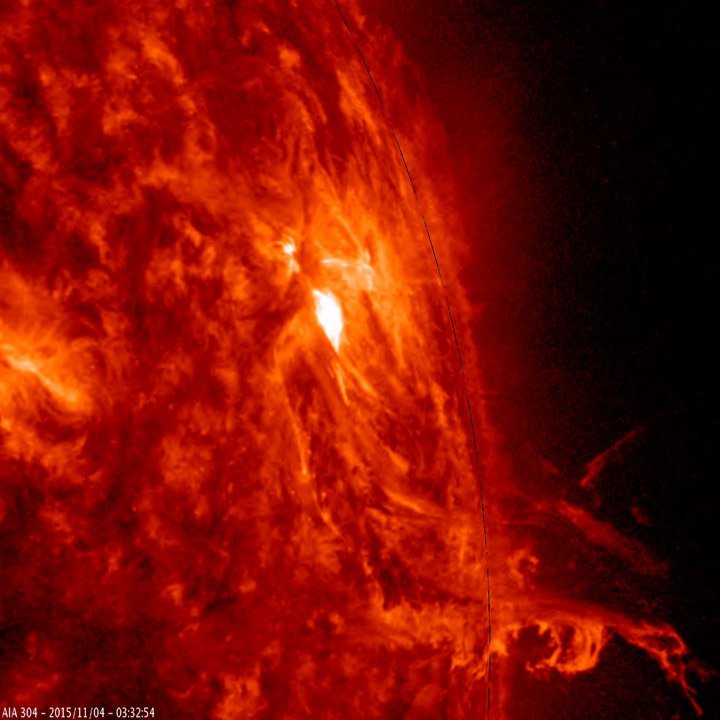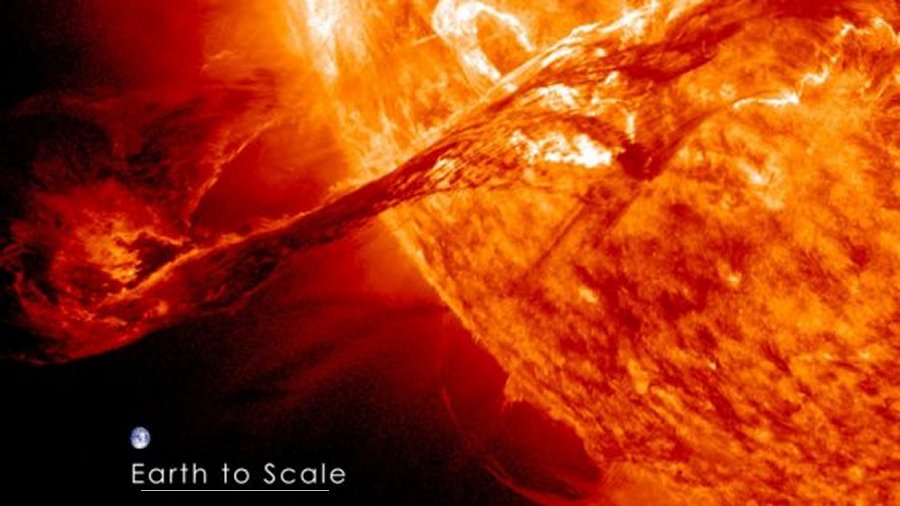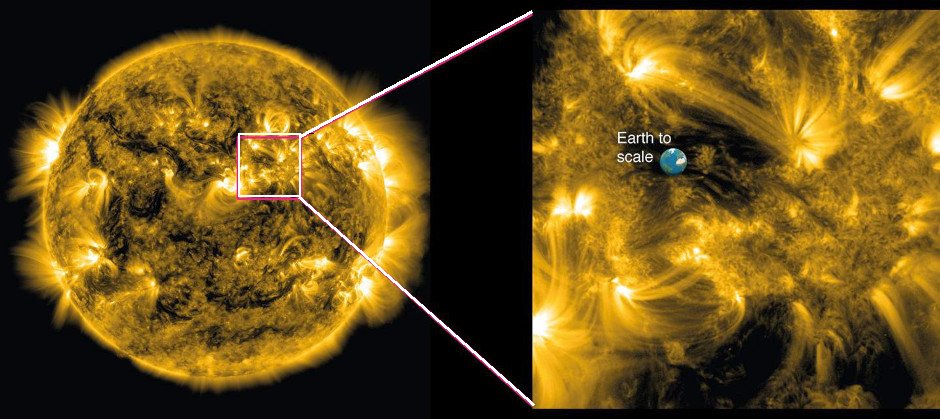Crucial Milestone In Helping Predict Dangerous Solar Flares And Potentially Catastrophic ‘Space Weather’
MessageToEagle.com – Solar flares are massive explosions of energy in the Sun’s atmosphere.
Experts have warned that even a single ‘monster’ solar flare could cause up to $2 trillion worth of damage on Earth, including the loss of satellites and electricity grids, as well the potential knock-on dangers to human life and health.

We counted at least a dozen minor eruptions from this close-up video of an active region over a 30-hour period (Nov. 3-5, 2015). The eruptions included several small flares (seen as brief white flashes) and numerous tongues of plasma lashing out as the competing magnetic forces grappled with each other. The images were taken in a wavelength of extreme ultraviolet light that shows activity not far above the Sun’s surface. Credit: Solar Dynamics Observatory, NASA.
A key goal of the $300 million Daniel K Inouye Solar Telescope (DKIST), which will be the largest solar telescope in the world when construction is finished in 2019 on the Pacific island of Maui, is the measurement of magnetic fields in the outer regions of the Sun’s atmosphere.
See also:
How Solar Flares Affect Human Health – Our Mind And Body
Now, an international team of researchers, led by Queen’s University, has devised a high-precision method of examining magnetic fields in the Sun’s atmosphere, representing a significant leap forward in the investigation of solar flares and potentially catastrophic ‘space weather’.
The technique pioneered by the Queen’s-led team, published today in the journal Nature Physics, allows changes in the Sun’s magnetic fields, which drive the initiation of solar flares, to be monitored up to ten times faster than previous methods.

The Queen’s-led team, which spans academics from universities in Europe, the Asia-Pacific and the USA, harnessed data from both NASA’s premier space-based telescope (the Solar Dynamics Observatory), and the ROSA multi-camera system, which was designed at Queen’s University Belfast, using detectors made by Northern Ireland company Andor Technology.
“Continual outbursts from our Sun, in the form of solar flares and associated space weather, represent the potentially destructive nature of our nearest star.

“Our new techniques demonstrate a novel way of probing the Sun’s outermost magnetic fields, providing scientists worldwide with a new approach to examine, and ultimately understand, the precursors responsible for destructive space weather,” lead researcher Dr David Jess from Queen’s Astrophysics Research Centre said.
“Queen’s is increasingly becoming a major player on the astrophysics global stage. This work highlights the strong international links we have with other leading academic institutes from around the world, and provides yet another example of how Queen’s research is at the forefront of scientific discovery.”
MessageTo Eagle.com
source: Queen’s University Belfast










